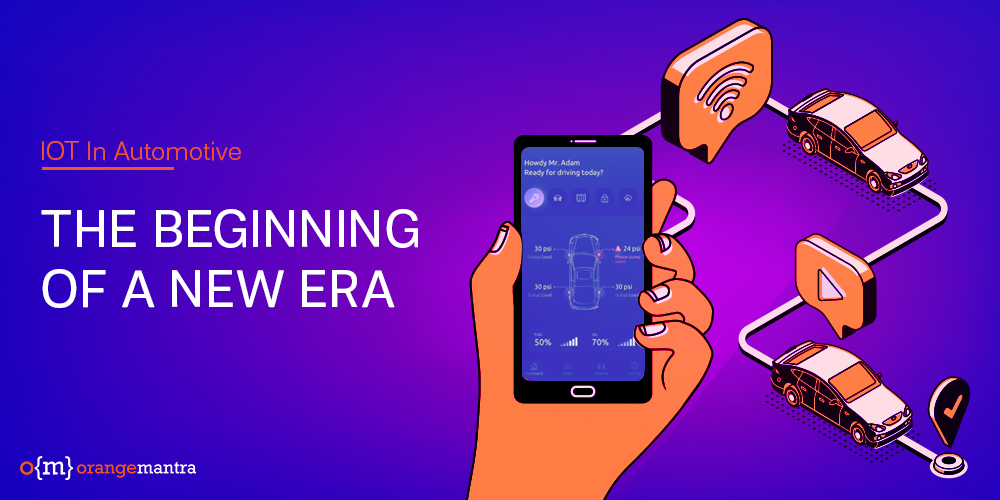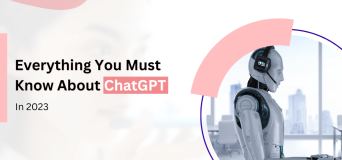The Internet of Things technology is no longer out of reach as IoT devices are more common than ever. They are being used in many ways, from controlling temperature, to measuring physical health indicators, and evaluating engine performance, all with a few clicks. The number of IoT devices across the globe is likely to exceed the 20 billion mark by the beginning of the next decade. Considering this, industries cannot afford to ignore the significance of this technology. The automotive segment, in particular, is on the brink of IoT revolution, with the technology fast emerging as the driving force behind the new-age vehicles. Before understanding the impact of IoT on automotive on a granular level, it is important to know more about the holistic influence.
IoT in automotive: Driving the change
Essentially, Internet of Things refers to the billions of physical devices which are connected to the internet. These devices are capable of collecting, sharing, and exchanging data with the other connected devices within the IOT ecosystem. Further, these devices leverage the wireless technology to operate and communicate without human involvement. Complex IoT-based technologies comprise elements such as software, electronics, sensors, and connectivity devices. Combined with sophisticated algorithms, the technology has the potential to operate devices from a distance. IoT is being embraced by the automotive industry to enable in-vehicle connectivity and much more. Let us see how it is driving the change for this vertical.
Predictive maintenance for keeping the vehicles in the best condition
The predictive maintenance technology uses IoT connectivity to collect performance-related data on different parts and analyze it to assess the risk of potential malfunction of the hardware or software of the vehicle. This is done through IoT-enabled sensors which monitor the functional metrics such as engine status, temperature, speed, navigation, and electrical systems. Once this information is processed, the driver is given notifications and recommendations about the service or repair required to avoid potential incidents and address issues even before they arise. Predictive maintenance becomes useful for both private owners and fleet businesses. It empowers the end users with relevant information in advance and makes rides safer and more convenient than ever.
Regular monitoring and maintenance
Besides predictive maintenance for resolving major issues that might crop up, IoT also facilitates the monitoring and maintenance on a regular basis. Sensor-based messaging offers a convenient mechanism to send across diagnostic or malfunction information to the vehicle manufacturer. Rather than showing a maintenance light to the car owner, a message will be directly sent across to the manufacturer who will connect the owner for discussing the requisite repairs and the available service appointments. The entire practice eliminates the service delays and ensures a safer on-road experience for the driver.
In-vehicle entertainment for enjoyable on-road experiences
Beyond just empowering car owners with predictive data for maintenance and repairs, IoT also makes their driving experiences more enjoyable. The cars of the future will be have connectivity features fitted into their infotainment systems, enabling drivers to access on-demand entertainment, maps, and an array of internet-connected services. Additionally, smart apps are also a part of the car infotainment systems and can provide amazing features such as in-car navigation, entertainment, and telematics. Just like investing in sensors and connected devices, IoT app development becomes as crucial a part of adopting this technology.
Surveillance, safety, and security for the vehicles
The external IoT sensors work as rear-view cameras and proximity sensors which ease up parking, make driving safer, and enable blind spot detection for the drivers. Further, they are capable of tracking the weather conditions, road conditions, and surrounding traffic patterns. With connected cars in an ecosystem, it becomes possible for the in-vehicle systems to predict and prevent collisions and accidents with predictive analysis.
Keeps driver empowered with OTA updates
Another IoT trend that is emerging strong is the use of over-the-air (OTA) updates and data platforms. The connected vehicles can use these data platforms to receive feature updates, map and traffic updates, bug fixes, software upgrades, and safety improvements. Drivers of connected vehicles are already using OTA technology to get flexible 3D mapping, map updates, and an array of extended driver assistance features. In fact, automotive manufacturers may have to comply with the technology in the coming times.
IoT-based smart infrastructure
Automotive technologies cannot become fully functional unless smart machine-readable infrastructure is available for such vehicles to run. Beacon-equipped street signs, lane markers, and traffic signals equipped are the key elements of such infrastructure. Beyond just making driving safe and smooth, smart infrastructure can revolutionize vehicle design in the most exponential way. Once full automation technology will be implemented for roads and vehicles, the latter will no longer need turn signals and mirrors.
Data analytics and dashboard reporting
Road safety and enhanced driving experiences are just one aspect of the automotive IoT picture. The technology will have a major role to play in the manufacturing operations as well. This is because connected cars offer extensive driver data that becomes the basis of testing, prototyping, and development of better autonomous vehicles. As the number of vehicles in the IoT enabled ecosystem will increase in the future, the amount and quality of data so generated will improve as well. With tools for data analytics and dashboard reporting, automotive players can improve their offerings and serve the expectations of their customers better.
Are your geared up for the IoT revolution?
As the automotive industry comes across IoT innovations at a rapid pace, staying abreast with the technology is no longer a choice for brands. However, they will come across a number of challenges while making the transformation. At the same time, they will need to take numerous steps to reinforce their value propositions so that they keep pace with the competition. OrangeMantra offers competitive IoT-based solutions and services to help businesses in the automotive industry stay competitive and nimble in the face of digital disruption. Our team possesses extensive expertise in the IoT technology along with rich experience in the automotive domain. Share your requirements with us and we will empower you with the right technology solution.






















